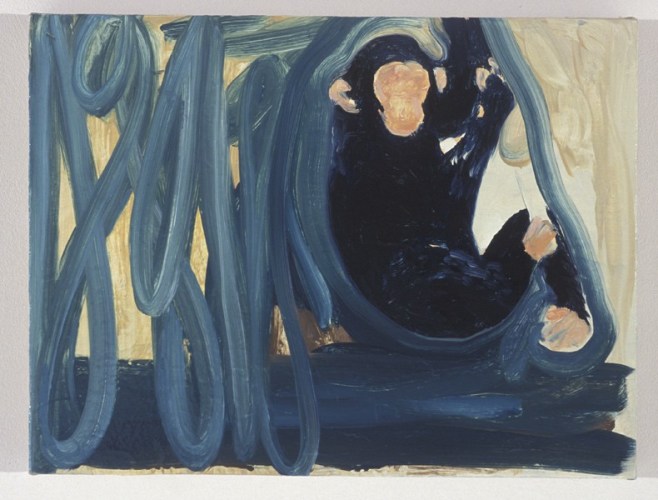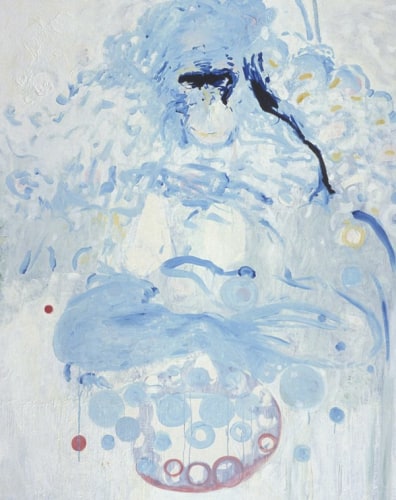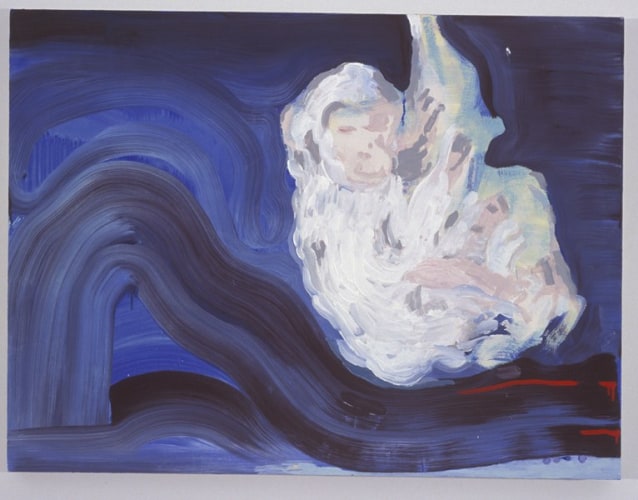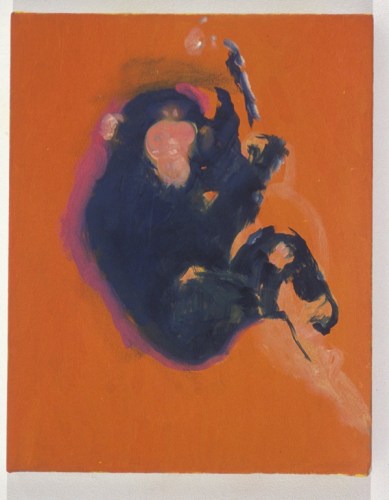FOR IMMEDIATE RELEASE
Magnan Projects is pleased to present Laurie Thomas: Monkey Moves, a much anticipated follow-up to her critically acclaimed New York exhibition “Chandeliers” (2003). The exhibit will be on view from October 14 – November 12, 2005.
In Monkey Moves, Thomas continues her exploration of abstraction, drawing and color. The transition in subject matter from the majestic chandeliers of Grand Central Station to that of monkeys may seem unlikely. There is, however, a common thread in Thomas’s approach to both the art of painting and her masterful ability to transform images of inanimate objects (chandeliers) and animate subjects (monkeys) into complex themes of human emotion.
Thomas’s work bridges the intimate physicality of painting and the sense of movement experienced by the viewer. Encompassing story, time and architecture, the paintings possess both a rich riotous feel and a subtle reductive sensibility. The handling of surface and markings are essential to Thomas’s painting. The layering of paint and strong depth of color field breathe life into her Monkey Moves series. On each canvas a story unfolds.
See Do Stop, for example, is a small oil on linen work (12 x 16 in.) built of thick earth colors with broad strokes and abstract depictions of the monkey and its environment. Immediately, the viewer discerns the blank face of the monkey and feels the imminent change to repose from swinging on a line. She Gorilla Spin on the other hand, is a large scale piece (60 x 48 in.) painted in pastel blues and whites with a light touch and soft edges. Thomas employs deliberate brush strokes to delineate an intelligence and possible sense of wisdom behind the eyes.
William Stover, Assistant Curator of Contemporary Art at the Museum of Fine Arts Boston observes, ”Monkeys have a long and complicated history in the iconography of art. Thomas expands on this history and presents the monkey as a symbol and surrogate for our existence in the world. The monkey represents for Thomas a connection to our past and an honoring of primal roots… [She] creates a stage set in which monkeys are actors in a play about the customs, etiquette, and social mores of the human community. These monkey moves are located in the multi layers and marks of oil; the grit, dry and wet of painting. Thomas invites individual viewpoints and ideas about the relationships she constructs within her paintings. These monkeys look out at you and grab your attention, just asking to be engaged with. Their personalities and their individuality are apparent from the moment you lay eyes on them, while at the same time they invite you to recognize bits of yourself and others.”




